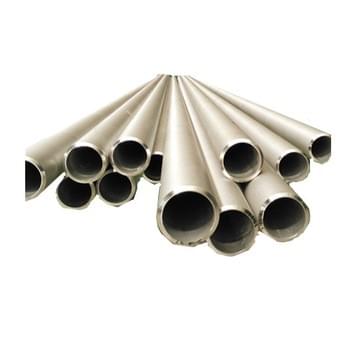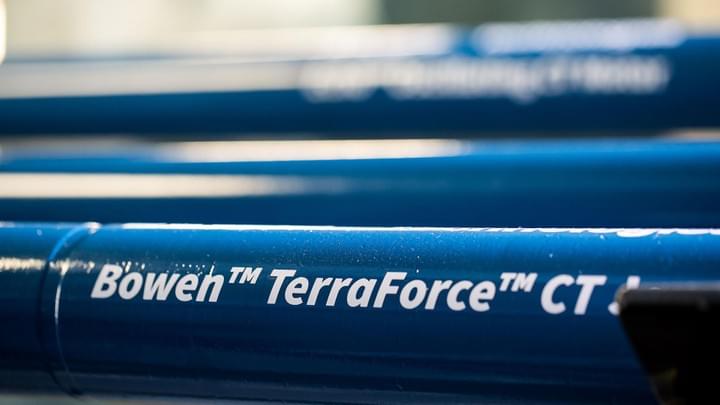
From idea, to design, to lab & rig test, to commercial success

New Thread
I helped develop a new specialty thread with a 29 degree angle, similar to an ACME connection. Based on the thread lead, diameter and spacing, one could control the relationship of make up and break up torque.

New Calculations
Based on the new thread design, I created a calculator that correlated the relationship between torque, friction, and axial load.

Lab Testing
The calculations were validated both through FEA and through rigorous lab testing using a torque master. The results for the calculations were within 5% of the lab results. Once the calculator was accurately validated, it was used to quickly and easily design other tool sizes, specific for different applications and markets.

Field Testing
The tool went through two years of field testing before it was fully commercialized. It was tested in more than 40 drilling operations in both the USA and Canada. I was the main point of contact for any technical support.

Once the tool had been proven as a concept in the lab, and in the field, NOV expanded their fleet to include more than 200 assemblies. Each assembly was ran several times per month. The tool worked flawlessly in the field. I created all the manuals and technical documents needed to fully commercialized the tool.

Patent
US Patent: US10006256B2. "Safety Joint designed with anti-lock pressure compensation seal", Investors: James R. Streater, Jr., Danierl Hernandez JR., Josefat Rodriguez-Estrate, and Francisco J. Tejada, JR.
Based on a previous set of spears Excel calculator I developed, I worked with the IT team to create an application that would allow the user to input the specific parameters of their set up and quickly spit out the system ratings. The calculator considers API tolerances, Grapple ranges, and material compositions. The calculations had previously been validated through FEA, and lab testing.
Mill Design Project
I designed various kinds of mills (Flat, Junk, Conebuster, Piranha, etc.), in many different sizes (from 2” all the way up to 24”), based on customer and product line feedback. For each type of mill, I created calculators to expedite the design process . Examples of the mills can be found below.
 Applications for use
Applications for use- General junk
- Stationary/fixed obstructions
- Production equipment, such as bridge plugs, packers, and retainers
- Cemented tubulars
 Applications for use
Applications for use- General junk
- Stationary/fixed obstructions
- Production equipment, such as bridge plugs, packers, and retainers
- Cemented tubulars

String Magnet Project

Design with Vendor
We worked with a magnet vendor to develop a new downhole string magnet based on their patented design.

Lab and Rig Testing
After the initial basic design, I tested the magnets under various conditions in the lab. I then coordinated the testing of the tool in an NOV rig as part of a larger BHA. Once we were happy with the tool performance, I completed a more detailed assessment that included fatigue analysis which included torque, tensile, and bending.

Once I validated the design in the lab, in the NOV rig, and various other field tests, I designed the rest of the sizes and completed fatigue analysis for each of them. I also created a service procedure for inspecting and replacing the magnets after field use in addition to various other commercialization documents.
High Pressure Casing Patches (HPCP)

Seal Testing
I tested a seal in high pressure and under cyclical temperature cycles, to ensure it met our functional requirements. I also calculated the pressure versus tensile rating for the assembly and displayed the information in a graph so that it could be quickly and easily referenced by operators.

High H2S & CO2 Environments
Extreme Environments
Based on customer requests, I designed new casing patches fit for sour and sweet environments. First, I calculated tool specifications (tensile, pressure, min OD, etc.). Second, I modified the design to fit the customer specific well conditions (seal selection, material specifications such as 13Cr, additional coatings, etc.). And lastly, I supported manufacturing and assembly operations during the entire process as needed.
Premier Patches
Lower Cost Alternative
In order to offer a "mid tier" product or "Premier Patch", I simplified the High Pressure Casing Patch design so that it could be manufactured at a lower cost. The Premier Patch would still maintain a relatively high tool specification (~10,000 psi) but could be sold at almost half the cost.
Stroking Tools

I designed, developed, and tested various shock tools for internal and external applications. Lab testing was completed using LabView to capture the displacement relative to pressure drop across the tool.

A typical jar works by creating an internal pressure which is slowly released through a metering hole between the cone and seal body from one chamber to another. The length, depth, and shape of the metering hole affects the jar firing time (how much time it takes for the cone to travel and build pressure before it releases). I tested and quantified the effects of geometry in firing time.

I supported field testing, created tool variations based in customer / field feedback, and made modifications to extend the tool life.


















